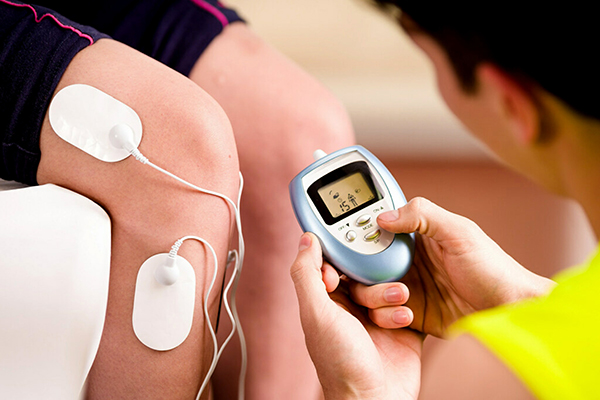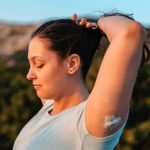When we think of those who have fragile skin we typically think of grandparents and babies, but these are not the only groups that can be affected by fragile skin. Many different factors can lead to a person having fragile skin at any age. Designing medical devices to be skin-friendly can be challenging enough, but when dealing with fragile skin, much more care and consideration must be taken when choosing an adhesive.
Choosing the correct stick-to-skin adhesive is a key factor for wearable device success. As manufacturers develop new adhesive formulations to meet ever-increasing needs, such as longer wear times and gentler adhesion, design and development teams have more adhesive options to choose from. It can be tricky to know where to start.
To create a device that is compatible with fragile skin conditions, you must first have an understanding of the science of skin and what conditions can enhance or increase its fragility.
The Symbiotic Relationship of Wearable Technology and Fragile Skin
As wearable devices continue to evolve, the industry’s understanding of skin should also improve and grow. New devices push the boundaries and enable new applications as they are currently known, and adhesives need to advance in tandem to support efficacy, economics and enhance device functionality.
Engineers who find the most success in designing effective wearable devices recognize that skin is a foundational element to the process. Each person’s skin is constantly changing, both because it replaces itself roughly every 14–21 days and because factors like age, genetics and health all contribute to its condition. As people age, skin fragility becomes an increasingly influential consideration. Skin cell renewal will slow, and effects such as reduced moisture in the dermis and epidermis can increase fragility.
But this is just one example. As mentioned previously, fragile skin can affect anyone. The range of conditions a person could present in the group most likely to wear the device should be top of mind during medical device design.
There are four main categories of fragile skin:1,2
- Physiological: Includes both extremes of the age spectrum along with sensitive areas of the body, such as the eyelids and face
- Pathological: Refers to skin conditions like acne or rosacea
- Circumstantial: A result of mechanical stress or from someone’s environment
- Latrogenic: Typically occurs following medicinal treatment or an aesthetic procedure
Finding a solution that fits both the device and the end-user needs may not be a simple task, which is why medical device designers should partner with adhesive experts to approach this challenge. Achieving longer wear-times on fragile skin is one scenario that inspired a portfolio of high-tack silicone adhesives.

Six Steps to Select Adhesives for Fragile Skin
To find success when selecting an adhesive for use on fragile skin, you can leverage the following six steps.
Step 1: Assess the application
The first step to determining which role the adhesive should play is asking your team what the primary component requirements are and how those interplay in the final application.
Step 2: Determine wear duration
The chemistry of long-term and short-term wear adhesives can be quite different. The final selection should provide performance that stays in place during application yet easily removes at end of device life. A bond that is too strong for the application could cause damage to the end-user, and a selection that is too gentle could fall off prematurely and compromise the treatment.
Another factor influencing wear-time is reapplication. If the same skin area is in contact with the same or a replacement device repeatedly, this could result in a skin injury. It is important to think about the duration and frequency of application together when selecting an adhesive.
Step 3: Understand the end-user
A number of factors about a product’s target end-user(s) could impact the adhesive choices fit for that particular application. In some cases, you might even contemplate a portfolio with a range of adhesion options to suit the demographics at hand.
Understanding the health and condition of the wearer’s skin can help mitigate poor adhesive selection. For example, if a product is designed to help treat a specific medical condition, manufacturers should ask themselves how the condition may affect the user’s skin.
Step 4: Plan for device placement
Skin’s elasticity and strength vary across every area of the body, meaning intended device placement could significantly influence adhesive and overall device performance. A patch over the eye, for instance, would have vastly different adhesive requirements because of the fragile nature of the skin, compared to a patch on the forearm or stomach.
The body’s contour and potential movement can also be a considerable factor to understand when making an adhesive selection.
Step 5: Evaluate end-user activity
The activity levels of end-users may impact which adhesive will satisfy device requirements. The body at rest compared to the body in motion can vary significantly in ways such as perspiration levels. Environmental conditions also play a role, so factoring in the climate in which the adhesive system will be used is important to understand.
Step 6: Consider adhesive categories
There are three primary categories of adhesives relevant to this discussion. Silicones, acrylates and synthetic rubber are the main adhesive categories and each will present different performance profiles throughout the application. Within each category you will have a range of adhesive levels. Once your team understands the device-use scenario and user details, you can then narrow down the options for final selection.
For fragile skin, the typical categories used for sticking to skin are acrylates and silicones. Silicone is the newest class of gentle to skin adhesive, and they are quickly becoming the go-to-choice for gentle skin applications. This is due to their inherently different physical properties that enhance their behavior both in application and removal, making them well suited for fragile skin applications.
Prioritize Time
Engineers approaching the adhesive selection process should take the time to gather the necessary information in order to select the best adhesive solution. We do not want adhesive failure to be the reason why an end user cannot take advantage of a life-saving technology.
If you prioritize the time to invest in this process, you can reap the rewards. A solid understanding of the emerging adhesive options available may even prompt inspiration or open opportunities for new products and applications.
References
- Blume‐Peytavi, U. “Fragility of epidermis in newborns, children and adolescents”. Journal of the European Academy of Dermatology and Venereology. Vol 30, Issue 9. pages: 1634-1634. First Published online: August 19, 2016. Fragile Skin Classification, Physiological Fragile Skin, Skin and skin barrier in newborns and infants, paragraph 1 &2. Retrieved from https://onlinelibrary.wiley.com/doi/abs/10.1111/jdv.13636.
- Galliano , M.F., et al. “Fragility of epidermis in newborns, children and adolescents”. Journal of the European Academy of Dermatology and Venereology. Vol 30, Issue 9. pages: 1634-1634. First Published online: August 19, 2016. Section: The development of cellular, tissue and clinical models to mimic fragile skin and an exploratory clinical evaluation of preparations to protect and repair fragile skin. Introduction paragraph 4. Retrieved from https://onlinelibrary.wiley.com/doi/abs/10.1111/jdv.13636






